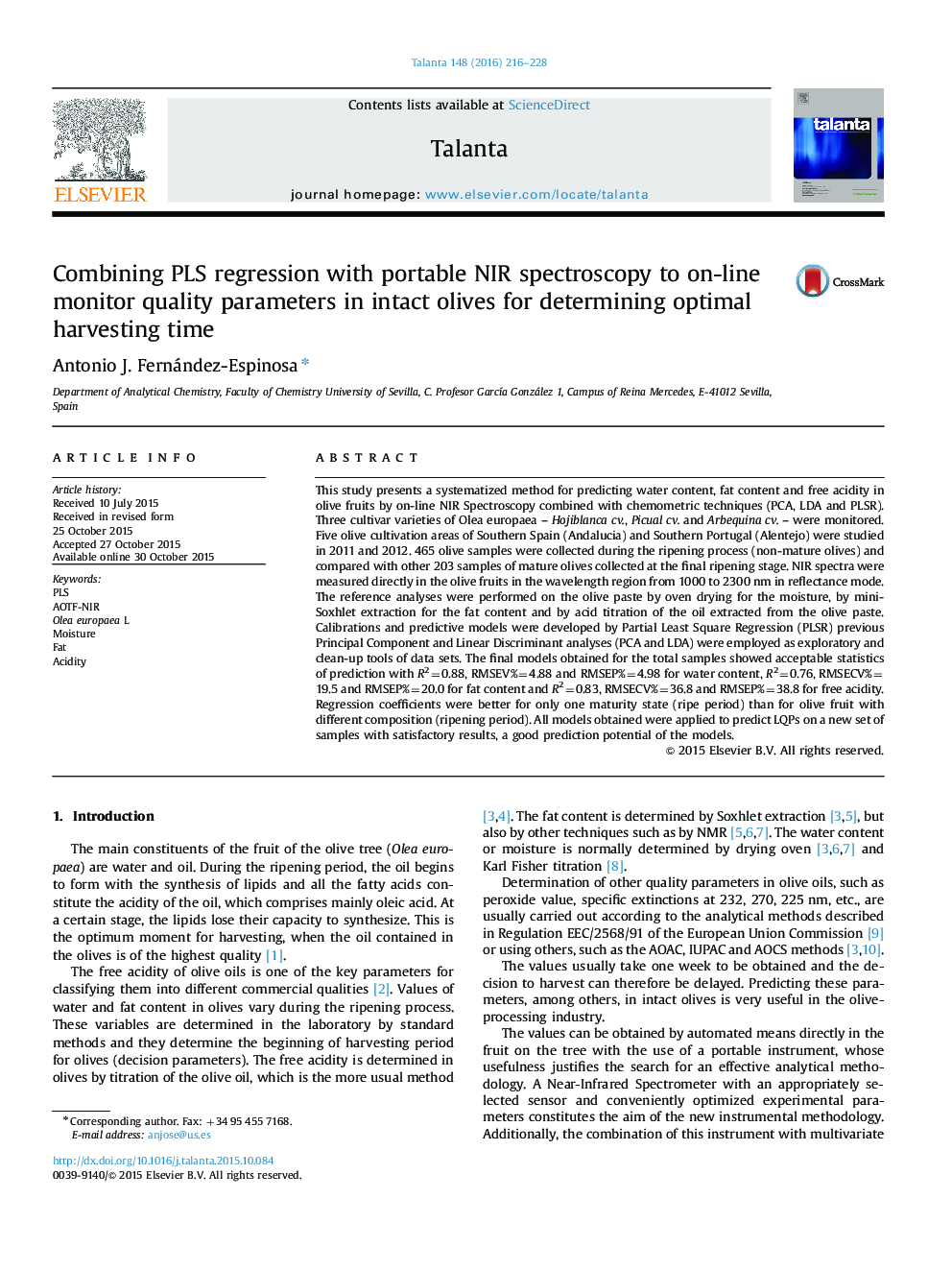| کد مقاله | کد نشریه | سال انتشار | مقاله انگلیسی | نسخه تمام متن |
|---|---|---|---|---|
| 1243778 | 1495787 | 2016 | 13 صفحه PDF | دانلود رایگان |

• NIR spectroscopy and chemometric study of three varieties of intact olive fruits.
• Spectrometer portable, with an InGaAs detector and 1 nm of spectra resolution.
• Water content, total fat content and free acidity as the quality parameters predicted.
• PLSR applied to reflectance data set, Savitzky–Golay smoothing and 2nd derivative.
• Best predictions for acidity with RPDcal 5.6, Rval2 0.96, SEP 0.019 and RMSEP 10.
This study presents a systematized method for predicting water content, fat content and free acidity in olive fruits by on-line NIR Spectroscopy combined with chemometric techniques (PCA, LDA and PLSR). Three cultivar varieties of Olea europaea – Hojiblanca cv., Picual cv. and Arbequina cv. – were monitored. Five olive cultivation areas of Southern Spain (Andalucia) and Southern Portugal (Alentejo) were studied in 2011 and 2012. 465 olive samples were collected during the ripening process (non-mature olives) and compared with other 203 samples of mature olives collected at the final ripening stage. NIR spectra were measured directly in the olive fruits in the wavelength region from 1000 to 2300 nm in reflectance mode. The reference analyses were performed on the olive paste by oven drying for the moisture, by mini-Soxhlet extraction for the fat content and by acid titration of the oil extracted from the olive paste. Calibrations and predictive models were developed by Partial Least Square Regression (PLSR) previous Principal Component and Linear Discriminant analyses (PCA and LDA) were employed as exploratory and clean-up tools of data sets. The final models obtained for the total samples showed acceptable statistics of prediction with R2=0.88, RMSEV%=4.88 and RMSEP%=4.98 for water content, R2=0.76, RMSECV%=19.5 and RMSEP%=20.0 for fat content and R2=0.83, RMSECV%=36.8 and RMSEP%=38.8 for free acidity. Regression coefficients were better for only one maturity state (ripe period) than for olive fruit with different composition (ripening period). All models obtained were applied to predict LQPs on a new set of samples with satisfactory results, a good prediction potential of the models.
Figure optionsDownload as PowerPoint slide
Journal: Talanta - Volume 148, 1 February 2016, Pages 216–228